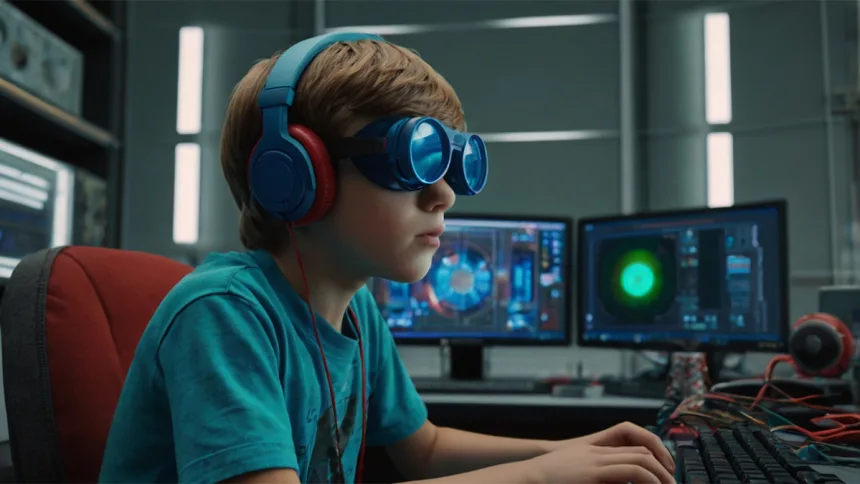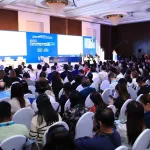Amblyopia, commonly known as lazy eye, is a leading cause of visual impairment in children, affecting approximately 2-3% of the population. This condition occurs when one eye fails to develop normal vision during early childhood, typically due to underlying ocular issues such as strabismus, refractive errors, or congenital cataracts. Early diagnosis and intervention are critical for improving visual outcomes. Recent advances in technology have introduced new approaches to amblyopia management, but it is essential to consider how these innovations complement established treatment methods and the challenges they may present.
Treating the root causes of Amblyopia
Amblyopia is often secondary to other ocular pathologies. Common causes include strabismus (misalignment of the eyes), refractive errors (such as myopia, hyperopia, or astigmatism), and congenital cataracts (lens opacity). The primary step in treating amblyopia involves addressing these underlying conditions.
In cases of strabismus, surgical correction may be necessary to realign the eyes. This procedure improves binocular vision by ensuring both eyes send balanced visual information to the brain, which can help strengthen the weaker eye and reduce the risk of amblyopia recurrence post-surgery.
For patients with congenital cataracts, early surgical intervention is crucial. Cataract removal allows light to reach the retina, enabling the brain to process clear images. Timely treatment, particularly in infancy, significantly improves the likelihood of developing normal visual acuity.
Also Read: The Modern Epidemic of Computer Vision Syndrome
Refractive errors contribute to amblyopia when there is a significant difference in refractive power between the two eyes, a condition known as anisometropia. Corrective lenses, either glasses or contact lenses, are essential in ensuring equal focus in both eyes. Special lenses, such as bifocals, may be required in some cases. Once the refractive imbalance is corrected, traditional amblyopia therapies, including patching or atropine drops, are employed to stimulate the weaker eye and improve visual acuity.
The role of technology in Amblyopia treatment
Technological advancements are beginning to transform how we manage amblyopia, particularly in terms of patient engagement. Digital tools, such as vision therapy apps and virtual reality (VR) platforms, offer innovative approaches to amblyopia treatment. These tools gamify therapy, providing an interactive and enjoyable experience for young patients, which can improve adherence to treatment regimens, a key factor in successful amblyopia management.
While still relatively new, VR-based treatments show the potential to enhance traditional amblyopia therapies. Research indicates that these platforms can be used alongside conventional methods like patching to further stimulate the weaker eye and encourage neural adaptation. However, these technologies are intended to supplement rather than replace standard treatments.
Screen time and its double-edged role
Despite the potential benefits of technology, the increasing prevalence of screen time presents challenges, particularly in pediatric eye health. Prolonged exposure to digital screens is associated with eye strain, which can exacerbate amblyopia symptoms and hinder treatment progress if not managed appropriately. Excessive screen time has also been linked to the growing incidence of myopia in children, a concern highlighted by the World Health Organization. Children engaging in near work for extended periods – whether for school, gaming or entertainment, face a higher risk of developing myopia.
While technology introduces promising new avenues for amblyopia treatment, it is vital to maintain a balanced approach that integrates both traditional and modern methods.
Dr. Laila Taha Ababneh, Consultant Ophthalmology, Mediclinic Al Noor Hospital
High myopia, if left untreated, can lead to more severe complications, including bilateral amblyopia, where both eyes develop poor visual acuity due to significant refractive errors. This condition underscores the importance of managing screen time as part of a holistic approach to eye health, especially in children already at risk for amblyopia.
Balancing tradition and innovation
While technology introduces promising new avenues for amblyopia treatment, it is vital to maintain a balanced approach that integrates both traditional and modern methods. Patching and corrective lenses remain the foundation of amblyopia treatment, supported by decades of clinical success. Digital tools and VR therapies can enhance patient engagement and adherence but should be used as adjuncts to, not substitutes for, these proven methods.
Parents and caregivers play a crucial role in managing treatment adherence and monitoring screen time. Ensuring that digital therapies do not contribute to excessive screen use is essential for maintaining a healthy balance between therapeutic benefits and potential risks.
Amblyopia remains a condition that requires early intervention and a multi-faceted treatment approach. Addressing the underlying causes, whether strabismus, refractive errors, or cataracts, is the first step toward successful visual rehabilitation. While technology offers exciting new tools for managing amblyopia, the benefits of these innovations must be weighed against their potential drawbacks, particularly concerning screen time.

Healthcare professionals should consider integrating technology in a way that complements traditional methods and ensures consistent patient monitoring. Reducing screen exposure, particularly in non-therapeutic settings, will further help mitigate the risk of amblyopia progression and other complications such as myopia. By combining established treatments with emerging technologies, we can optimise outcomes for children with amblyopia and protect their long-term vision.



















